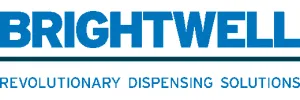News & Insights
Read the latest news from us and our clients across the globe

Posted on 11 April 2017 by Ceris Burns
A holistic approach to hygiene
Awareness is growing of the need for hygienic cleanliness to safeguard and promote health and wellbeing. Gordon McVean, International Sales and Marketing Director for Truvox International, calls for a holistic approach that combines hygiene and efficiency and covers floors as well as touch points and air quality.
Winter and the waves of influenza and vomiting bug outbreaks bring the importance of hygiene into stark relief. The disruption, lost business and reputational damage can be considerable, not to mention the misery and personal impact for individuals.
Employees, customers and other building users have a personal responsibility to minimise these risks by washing hands thoroughly, staying away if feeling ill and not exposing others unnecessarily to viruses. But the onus is on facilities managers to run an effective cleaning regime that promotes hygiene and protects against infection.
That level of expectation is increasing as wellbeing rises up the agenda of building owners and occupiers. Major employers in particular understand the impact on their business of high levels of sickness, which runs to hundreds of millions of pounds each year in the UK. This is concentrating attention on how the workplace is serviced, the effectiveness of cleaning, and its impact on indoor air quality and hygiene – all year round.
During the winter months, it is prudent to adapt the cleaning regime to include daily wipe-downs of contact points and to increase cleaning frequency. All cleaned surfaces risk being re-contaminated also by airborne viruses and people’s hands.
Touch points such as door handles, table tops, washroom taps, phones and computer keyboards are viral hotspots – as are any enclosed spaces where people gather, like a coffee or lunch room.
Hand sanitisers and virucidal solutions are advisable. But care must be taken not to introduce chemicals that could trigger allergies or asthmatic reactions. Microfibre cloths are effective, when replaced at recommended intervals and washed at hot temperatures to sanitise them for re-use.
The need for an increased cleaning frequency also applies to floors, which tend to be subject to larger quantities of grit and other contaminants being tracked into and through buildings. Floors too can act as a reservoir of pathogens that may be spread around a building and onto touch points or transferred in other ways.
Whatever the weather, or time of year, floor cleaning is fundamental to hygiene and infection control, although this is often overlooked. That neglect is at its most extreme where the cleaning regime relies on manual mopping. It is surprising – if not shocking, given the advances in cleaning technology – that hand-mopping persists even in building environments where the need for high standards of hygiene should be uppermost. From schools to leisure centres, and kitchens to washrooms and toilets, mopping runs the obvious risk of recirculating and spreading soils in dirty bucket water. Hand mopping is not an effective way to remove contaminants from any floor, let alone from the grout lines in tiled floors or other crevices.
Important though hygiene is, the reality for facility managers and cleaning contractors is that cleaning practice must be efficient and cost-effective to deliver such high standards consistently and sustainably.
Which is why we advocate a holistic approach to cleaning that takes full account of the time and labour costs involved, as well as compatibility with the patterns of a building’s use. This means factoring in the size of the floor areas to be maintained, the different types of surface, noise and other disruptive impacts on building users or occupants, depending on the timing of operations.
Viewed from this perspective, a cleaning machine’s versatility can be crucial to cost-effective hygienic cleaning. A scrubber dryer, for example, that can wash, mop, scrub and dry a variety of hard floors will often be the most highly utilised weapon in the cleaning team’s armoury in busy buildings.
Fitted with the right brushes – colour-coded to guard against cross-contamination – the same machine can clean concrete, terrazzo, marble, slate, stone and composite vinyl surfaces. Safety flooring, which is on the increase in hospitals, is also suitable for cleaning by an advanced scrubber dryer. Where strict infection rules call for the use of natural detergents and taurine-based products, continuous brush agitation and consistent pressure are essential.
Rotating cylindrical brushes are particularly effective also when it comes to cleaning deep into grout lines where bacteria can easily multiply. Brushes made from polypropylene are easy to disinfect, and won’t harbour bacteria that natural fibres can.
Well-designed scrubber dryers offer additional capabilities, even cleaning entrance matting and low-pile carpets.
When it comes to carpeting, daily and deep cleaning each have a role to play in maintaining a hygienically clean environment. Vacuums are designed to remove dry dirt, so their filtration systems are vitally important. An outdated or poorly maintained vacuum cleaner can exacerbate allergies and adversely affect indoor air quality. HEPA filtration is now the norm, and vacuums should provide at least three-stage filtration using HEPA 10 filters to trap all particles of 0.3 microns and larger.
Daily vacuuming is the mainstay of a hygienic cleaning regime in any busy environment. But it will not remove sticky and greasy soils that build up over time and can play host to toxins. Encapsulation is the most effective method for removing these substances. A polymeric cleaning solution encapsulates the soil so it can be removed by vacuuming, restoring carpets to a visibly pristine appearance while also eliminating the soils embedded deep in the pile.
Any building’s occupants and visitors will be reassured and feel valued when they can see the results of effective floor cleaning. Facilities managers, and their managerial colleagues, meanwhile can appreciate the value of assuring a hygienically clean environment from the ground up.
Reproduced by kind permission of The World’s Fair Ltd
Published in FMUK – March/April 2017
Experts in Public Relations Services & Communications Management
Our ServicesGenuine industry specialists in cleaning and hygiene, environmental and recycling, and facilities management
Our Sectors












